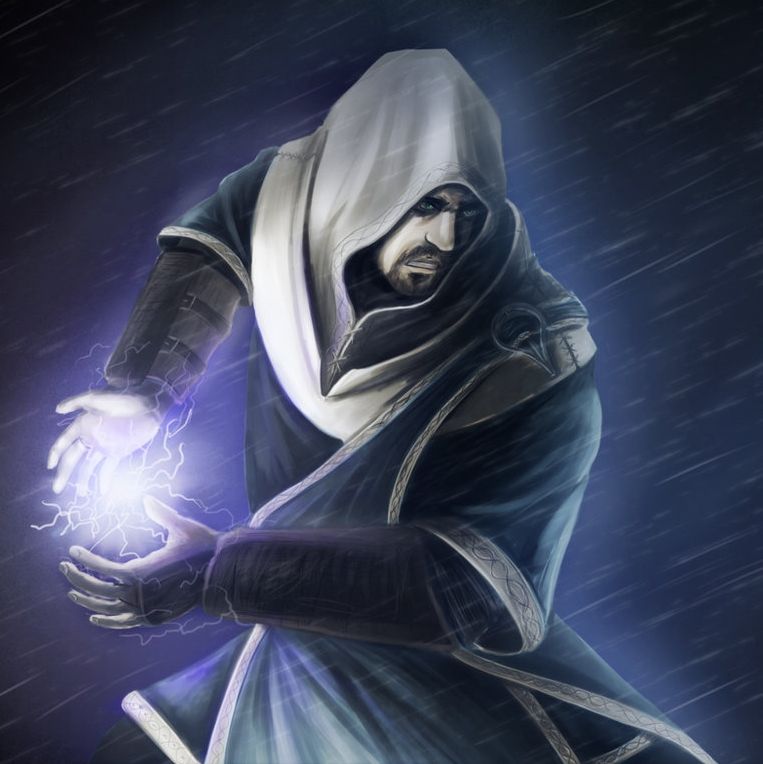Post by Roderick Faulkner on Feb 6, 2016 12:45:23 GMT -8
Gavriila Shahar
Sebastian Michael West
Tinsley Elena Rutherford
Rod was more than a little happy to be back teaching. The classes were small, which was nice. It was easier for him to adjust his lesson plans or give students one-on-one attention if they needed it. Plus, a small class had a more intimate feel where he wasn't some abstract professor figure that just stood up for an hour and droned on about math. In college, he loved his classes where there were only maybe ten other students. He got to know his professor and felt more comfortable approaching him or her with questions.
He sat down in his chair to wait for the students to arrive, the board all ready for the day's lesson. Geometric Mean was a bit of a bore, but necessary to really understand the Pythagorean Theorem. A calendar for the month was posted near the door with all the homework assignments and test dates. He also had it written up on the board as an extra reminder. A manila folder sat on an extra desk titled HOMEWORK 8.1. As he said in the previous class session, homework was always due at the beginning of class. He was grading more for completion, though one point was given for correctness. He would randomly check four problems, and a quarter of a point was awarded for a correct answer with work shown.
He wrote today's homework on the far right side in purple, HW: 8.2 1-3, 9-19 odd, 30-33, 41-44, 49. The heading was the Pythagorean Theorem, a2 + b2 = c2[/sup][/b], and underneath, he had a big triangle with the angles and sides listed in green. To the left of that were the Pythaogrean Triples.
3, 4, 5
5, 12, 13
8, 15, 17
7, 24, 25
They were worth memorizing in his opinion especially given how often they would come up in homework. Underneath the homework and to the right of the main triangle, he had six sample problems for students to work through. The first three were to establish that any side could be found, not just c, and the bottom three all used a Pythagorean Triple, though it wasn't readily apparent. He started class as soon as the bell rang.
"Good morning, class. If you haven't turned in your homework to the folder, please do so now. I'll hand back the homework next time, and we can go over any questions then. Your first quiz is next Wednesday, and that will cover sections eight-point-one through eight-point-four."
He proceeded to take roll call as a way to refresh his memory of names and faces. He felt bad for his wife who had four sections to teach and a lot more students. Then again, student teaching in the New York area was interesting as those classes could have around twenty students in each section.
"Today we'll be covering the Pythagorean Theorem. Pythagoras was a Greek philosopher and mathematician in the sixth century B-C-E. He proved that the square of the hypotenuse is equal to the square of each leg added together. We write this out as a squared plus b squared equals c squared. There is a proof in your textbook on page 541. For example, if we set side a to three and side b to four, we can solve for c. Three squared is nine plus four squared--sixteen. Nine plus sixteen is twenty-five, and the square root of twenty-five is five."
He erased the lowercase letters and replaced them with numbers as he demonstrated. It took him a little longer as he couldn't erase with one hand and write with the other, but speed was not important in math.
"The three-four-five triangle is particular is special. We call it a Pythagorean Triple. The rest are listed here on the board--five-twelve-thirteen, eight-fifteen-seventeen, and seven-twenty-four-twenty-five. I highly suggest you memorize these as they will appear on your homework and throughout the term."
Like any good math teacher, he could recite them from memory and didn't need to look at the board. He gave the students to copy it down in their notes before continuing.
"Now, you can also solve for sides a and b as well using elimination. For example, if you knew that side c is thirteen and side b is twelve, you can solve for a. A squared plus twelve squared equals thirteen squared, or a squared plus one hundred forty-four equals one hundred sixty-nine. Subtract one hundred forty-four from each side to get a squared equals twenty five, square root of both sides, and a equals five. Any questions?"
He scanned the room for any raised hands. It started off fairly simply, but he wanted to make sure everyone understood the basics before covering more complex ideas such as what the converse of the Pythagorean Theorem proved.
"For practice, here are six problems. I want you to work through them all for about five minutes, then write an answer up on the board."
He erased the numbers from the big triangle and rewrote a, b, and c for the sides. In his opinion, the best way to understand and get good at solving math problems was to just do them. He assigned homework to solidify the material, not to give his students busy work.




